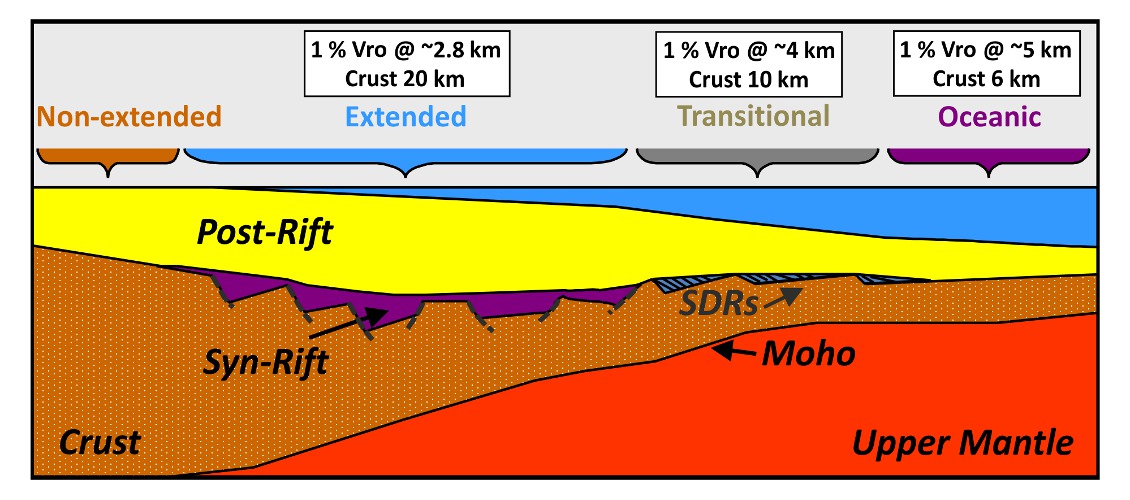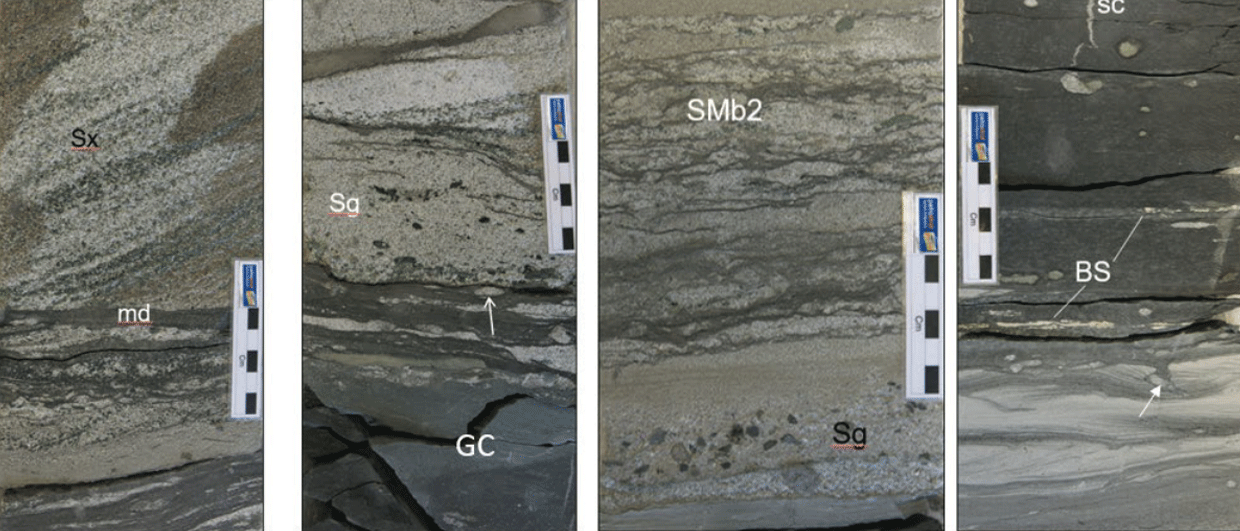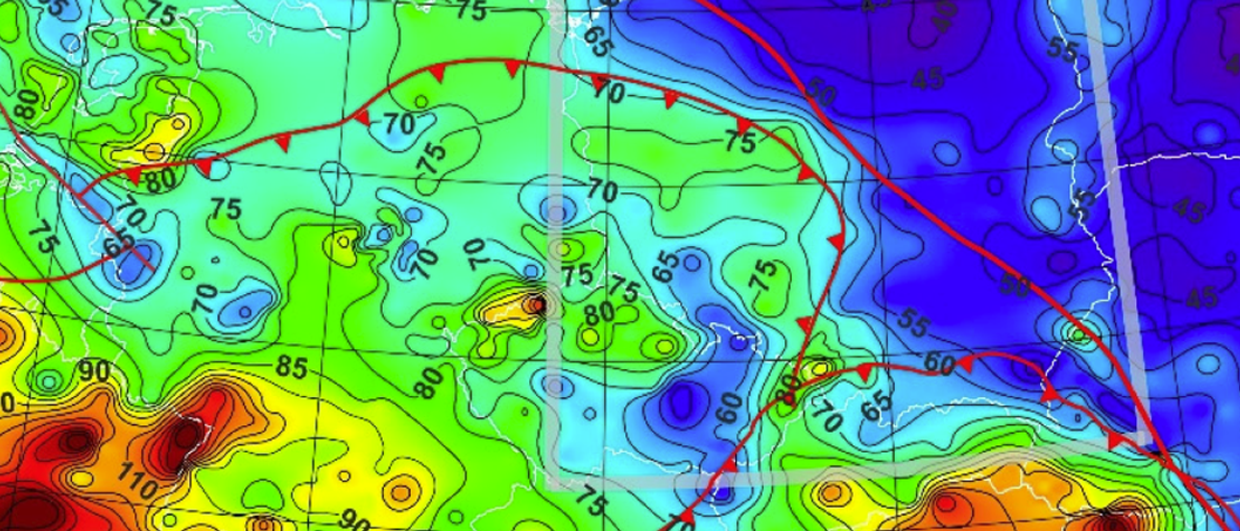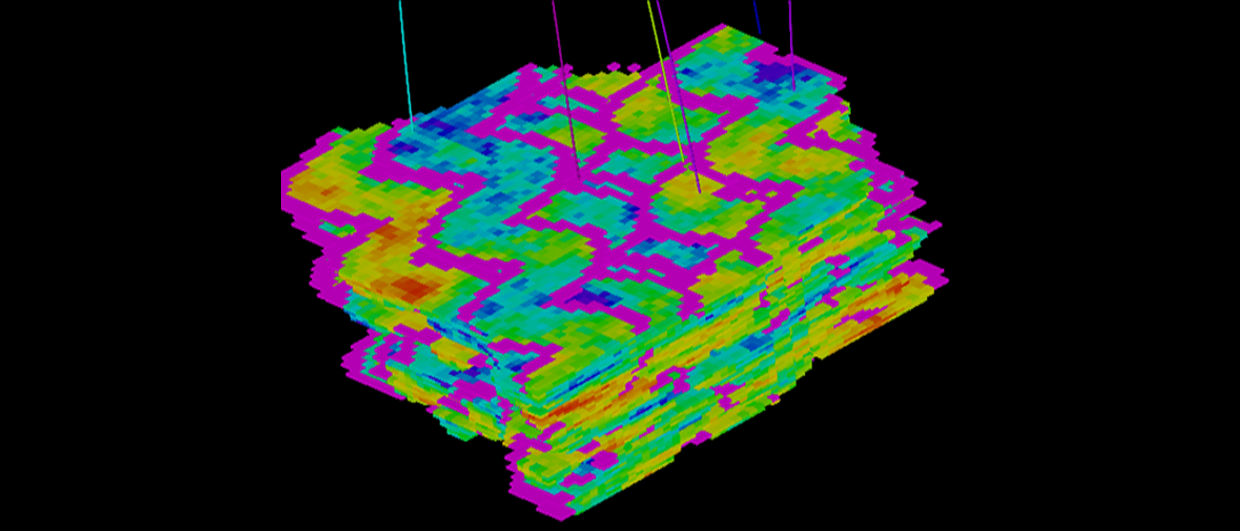In petroleum exploration, the concept of hydrocarbon generation on the continental crust is completely accepted. However, modelling exercises demonstrate that, if the source rock is present and a sufficient amount of sediment is deposited, it is possible to generate hydrocarbons over the oceanic crust. Accumulations in the Niger Delta, and recent discoveries offshore East Africa represent real life examples of this possibility.
Expanding Exploration
In recent years, the offshore search for oil and gas has moved from shelf to deep and ultra-deep water. New discoveries both expanded areas of economic interests and brought them to the edges of the continental crust. One of the common tasks at the early stages of exploration is mapping of the continental-oceanic boundary. This boundary is delineated based on different geophysical measurements such as seismic, gravity and magnetics. They revealed that the continental-oceanic boundary is actually not an abrupt, but rather a transitional zone. These methods often fail to outline it accurately due to many assumptions and ambiguities in the interpretation of observed features; however, they provide a quite reliable estimate of sedimentary thickness.
Why is the continental-oceanic crustal transition considered very important? Embedded in regional exploration workflows is generally a strong preference for prospects to be located on the continental crust. The main logic in this rule of thumb for many explorationists is that the continental crust generates 10–100 times more radioactive heat per volume than the oceanic crust and, therefore, ensures a sufficiently warm thermal history of source rocks within a sedimentary section to mature and generate hydrocarbons.
Neglected in this reasoning, however, is the fact that the thermal history of a basin is a function of not only basement heat flow history, but also sediment thermal properties and depositional history. Although the overall thermal history of sediments deposited on the oceanic crust tends to be cooler than over the continental crust, it does not automatically prevent source rock maturation.
Modelling Results
To illustrate this point, several models were constructed investigating the impact of crustal type and crustal and sedimentary thickness on hydrocarbon generation. The first geological scenario is a basin with a rifting period during 100–90 Ma and a continuous siliciclastic sedimentation to present-day (similar to the Equatorial/South Atlantic margin). Three models were derived to evaluate hydrocarbon generation over thinned continental crust of 20 km in thickness, 10 km-thick transitional crust, and 6 km-thick oceanic crust. Total lithosphere thickness was maintained at 100 km. The results of basin modelling indicate, for example, that over the thinned continental and oceanic crust, the potential source rocks would reach their maturity of 1% VRo (mid-range of oil window) at present-day depths of ~2.8 km and ~5 km, respectively. These estimates support the presence of sufficient heat flow for hydrocarbon generation in areas of thick sedimentary deposits over the oceanic crust such as those found along East Africa and Atlantic margins.
Another considered geological scenario is a young rift basin with forming oceanic crust such as the Red Sea with a high present-day heat flow, where 1% VRo is calculated at ~3.5 km depth.
As the thickness of a sedimentary package is usually mapped with high accuracy, the numerical integration assuming different crustal types and depositional history should be constructed early in, and throughout, the exploration workflow. Illustrating this approach, our exercise and real world examples prove that opportunities for hydrocarbon discoveries over the oceanic crust should not be overlooked!






